India has always been a melting pot of culture, history and segmented architecture that has garnered attention from all over the world. While the ongoing pandemic might have obstructed your travel plans for a time being, it certainly doesn’t mean that you won’t be able to explore fascinating places or historical monuments in India ever. We have compiled a complete list of historical landmarks in India you can travel once the Covid-19 pandemic ends for good. We bet that Coronavirus must have given you fresh outlook on life and you’d want to see the world from a new perspective. Meanwhile, you can take a look at this list and decide where you’d like to go first as soon as normal life is put on reset mode.
Qutub Minar, Delhi
[ps2id id=’qutub-minar’ target=”/]
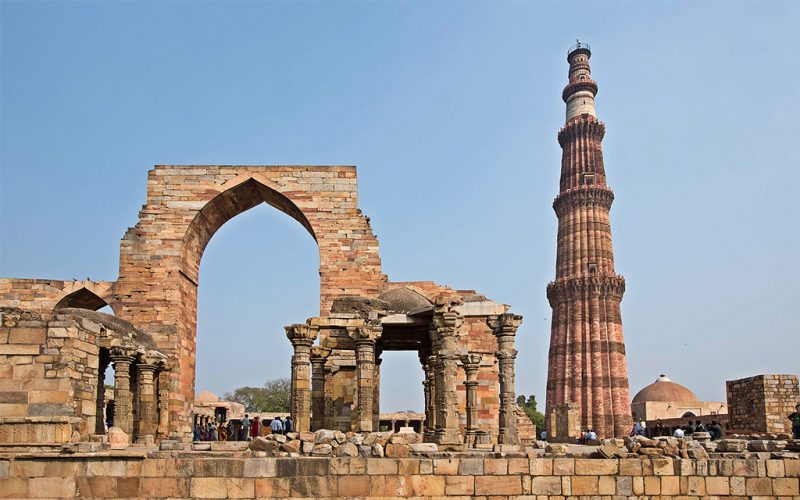
This 13th-century old architectural marvel was constructed by Qutab-ud-din Aibak as a victory tower to celebrate the victory of Mohammad Ghori over Rajput ruler Prithiviraj Chauhan. The red sandstone tower of Qutub Minar has five distinct storeys marked by a projecting balcony tapering from 2.5m at its peak to 14.32m at its base. As per the legends, construction material that came from 20+ Hindu temples was passed on for constructing the tower. You can see the carvings as the plaster has deteriorated over time.
There is a mosque at foot of the tower known as ‘Quwwat-ul-Islam Mosque’, considered to the first mosque to be built in India. In the courtyard of the mosque, a 7m-high iron pillar stands and it is said that if you encircle it with your hands, your wishes will be fulfilled. The construction of Qutub Minar took a long time and was finished by Iltutmish. It is said that the tower’s construction marked the beginning of Muslim rule in India.
Humayun’s Tomb, Delhi
[ps2id id=’humayu-tomb’ target=”/]
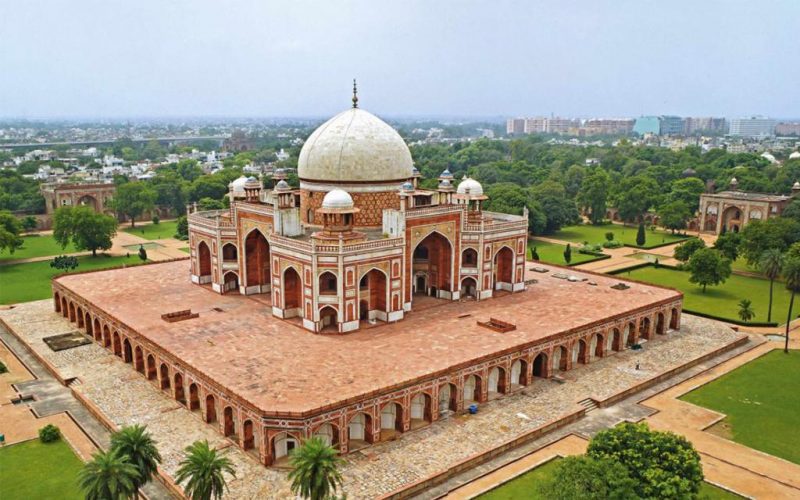
Known to be the first garden-tomb built on the Indian subcontinent that has inspired significant architectural innovations including the Taj Mahal, Humayun’s Tomb was built by Mughal Emperor Humayun’s widow ‘Hamida Banu Begum’ 9 years after his death. Situated in the eastern part of Delhi, Humayun’s tomb is one of the well-preserved historical monuments in India. This bewitching mausoleum is the first grand example of Mughal craftsmanship and architecture.
Heavily influenced by Persian and Indian architecture, Humayun’s descendants and his entourage were also buried here. The tomb is built with yellow and black marble, but the entire building is constructed with red sandstone. In the central room with arched windows lies the cenotaph of the ruler. Interestingly, it is also the place where the last Mughal Emperor Bahadur Shah II was captured by the Britishers.
Red Fort Complex
[ps2id id=’red-fort’ target=”/]
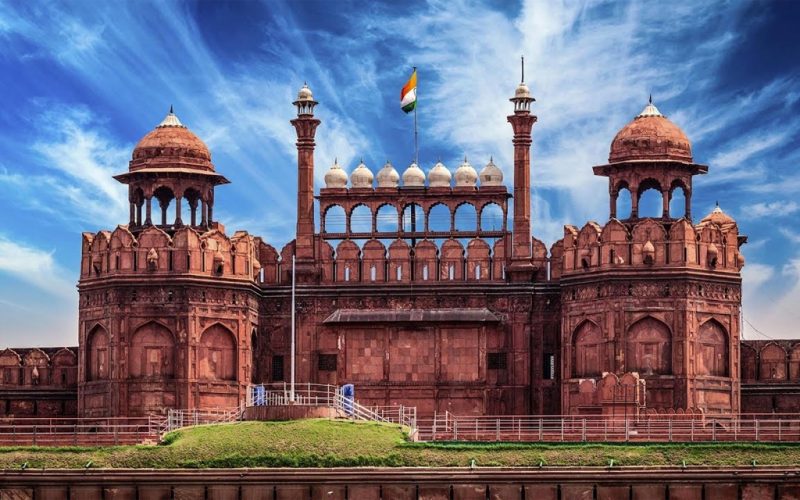
The complex around the Red Fort was called Shahjahanabad which was the capital of fifth Mughal Ruler Shah Jahan. Representing the pinnacle of Mughal architecture and creativity, the red fort is a fusion of Persian, Hindu and Timurid traditions. The fort’s distinct architectural planning and style heavily influenced other colossal monuments built by Mughal rulers. Red Fort is also the place where prime minister hoists the flag and gives a speech. Red Fort is a major historical landmark of Delhi that reminds one of the magnificent power and pomp of Mughals.
Agra Fort
[ps2id id=’agra-fort’ target=”/]
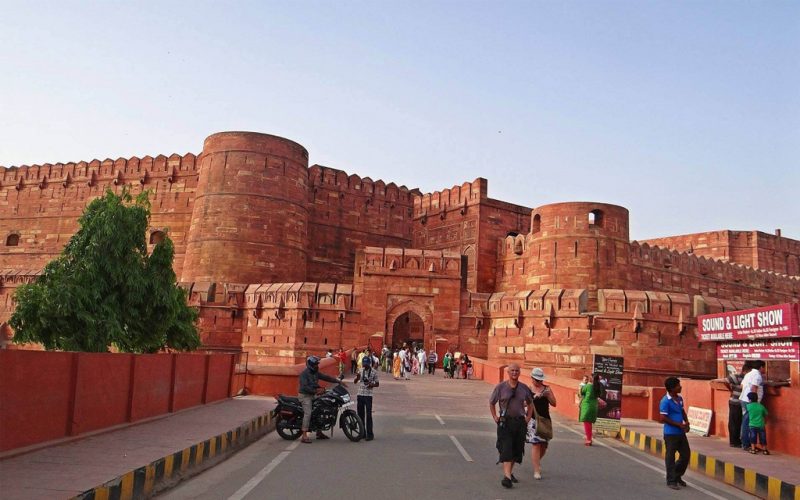
Agra Fort is one of the major historical landmarks in India showcasing the brilliance and creativity of Mughal Rulers. The fort was built under the reign of Akbar who intended to make this residence of the Mughals. The fort comprises many fairy late palaces like the Khas Mahal, Moti Masjid, Diwan-i-Khass, Diwan-i-Am, Machchhi Bhawan and many more. This is also the place where Shah Jahan, who built Taj Mahal, was imprisoned by his son Aurangzeb. Due to its historical and cultural significance, UNESCO declared it as a world heritage site. Delhi Gate and Lahore Gate are two entrances to this site, with the main gate being the Lahore gate.
Taj Mahal
[ps2id id=’taj-mahal’ target=”/]

Situated on the bank of Yamuna River, this colossal white marbled structure is known as the epitome of true love. Taj Mahal is one of the iconic monuments in India and an exemplary example of magnificent Mughal architecture. The mausoleum was built on the order of Shah Jahan in fond memory of his favourite wife, Mumtaz Mahal.
For its construction, Shah Jahan called finest labours, stone cutters, carvers, painters, dome builders, masons from across the empire and Central Asia and Iran. Whether or not, Shah Jahan ordered to chop the hands of workers involved in the construction of Taj Mahal so that they can never create another remarkable structure is a subject of study that even today fuels controversy.
Fatehpur Sikri
[ps2id id=’fatehpur-sikri’ target=”/]
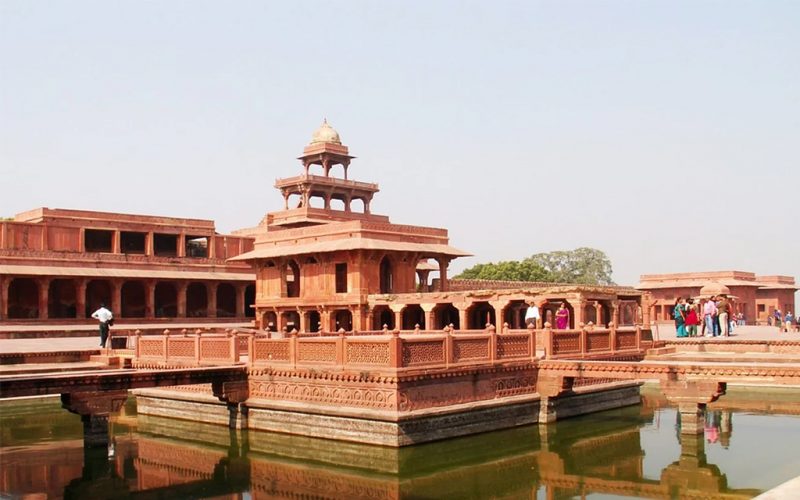
The city of victory, Fatehpur Sikri was built in the 16th century by Mughal Emperor Akbar. Situated nearly 37 Kms from Agra, the city was made in honour of the great Sufi saint Sheikh Salim Chisti. It is yet another fine example of Mughal architecture’s finesse with a charming blend of Islamic and Hindi elements. The complex of monuments houses important structures like Buland Darwaza, Jama Masjid, Diwan-i-Am, Birbal’s house etc. Fatehpur Sikri is the place where Akbar’s nine courtiers including Todar Mal and Birbal graced his court. The city was abandoned by Akbar for some unknown reasons and is now a ghost town except for tourists who come to see historical monuments.
The Architectural Work of Le Corbusier
[ps2id id=’le-corbusier’ target=”/]
The Capitol Complex in Chandigarh is one of the important historical landmarks in the country owing to its contribution in modern movement. Meeting the challenges of modern society, the complex was designed by architecture genius Le Corbusier who intended to test his modernist theories by designing well-planned structures. Designing the Capitol Complex paved way for blueprinting the first planned city of the country i.e. Chandigarh.
Nanda Devi and Valley of Flowers National Parks
[ps2id id=’nanda-devi’ target=”/]
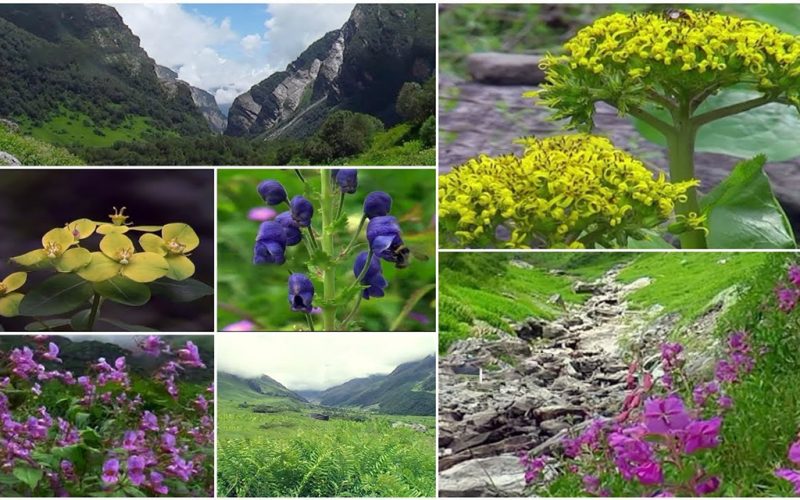
Tucked in the lap of Himalaya, Nanda Devi and Valley of Flowers National Park is a well-known UNESCO world heritage site attracting people from across the country and beyond. From the rich diversity of fauna and flora to outstanding natural beauty, the national park is a must visit for anyone seeking an escapade from his/her mundane life. The ruggedness of the park makes it difficult to access. However, these days, many treks are organized to capture sight of some of the rare species of birds, animals and flowers unique to the topography.
Hill Forts of Rajasthan
[ps2id id=’hill-fort’ target=”/]
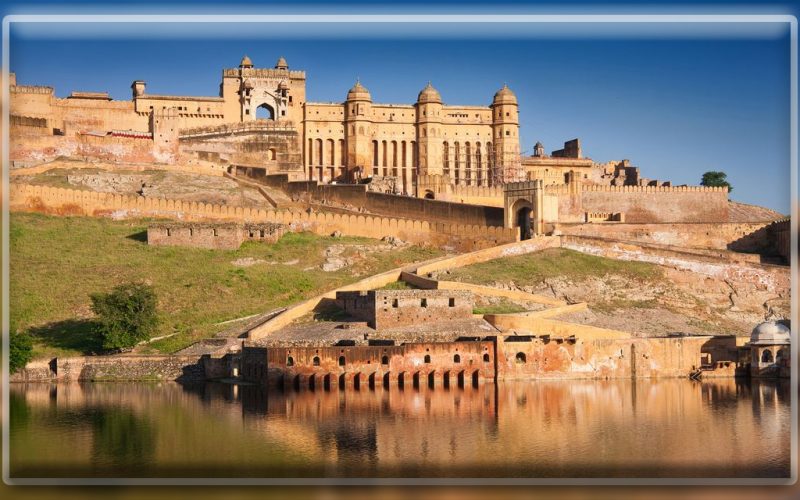
Rajasthan is home to many majestic forts acting as natural shield against attacks from hills, deserts, rivers and forests. Enclosed within parameters of culturally and historically rich Rajasthan lies 6 massive forts in Chittorgarh, Sawai Madhopur, Jhalawar, Kumbhalgarh, Jaipur and Jaisalmer known to be the UNESCO world heritage sites. These giant forts narrate the power of Rajput princely states that once thrived between 8th and 18th century. These forts also feature extensive water harvesting structures that are used till date.
Jaipur City, Rajasthan
[ps2id id=’jaipur-city’ target=”/]
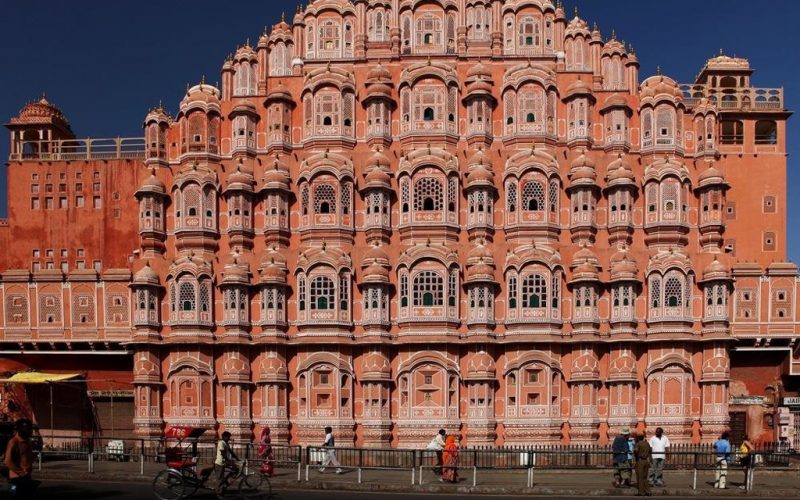
The fortified city of Jaipur is a popular historical landmark in the country that was founded by Sawai Jai Sing II, the same person who constructed Jantar Mantar. While other cities in Rajasthan are built on hilly terrain, Jaipur was established on the plain. The city is the amalgamation of Hindu, Mughal and Western culture and houses many majestic marvels like Hawa Mahal, Amer Fort, City Palace, Jal Mahal etc. The city is always bustling with tourists. If you really want to know the extensive culture of Rajasthan, Jaipur is a great place to start with.
The Jantar Mantar, Jaipur
[ps2id id=’jantar-mantar’ target=”/]
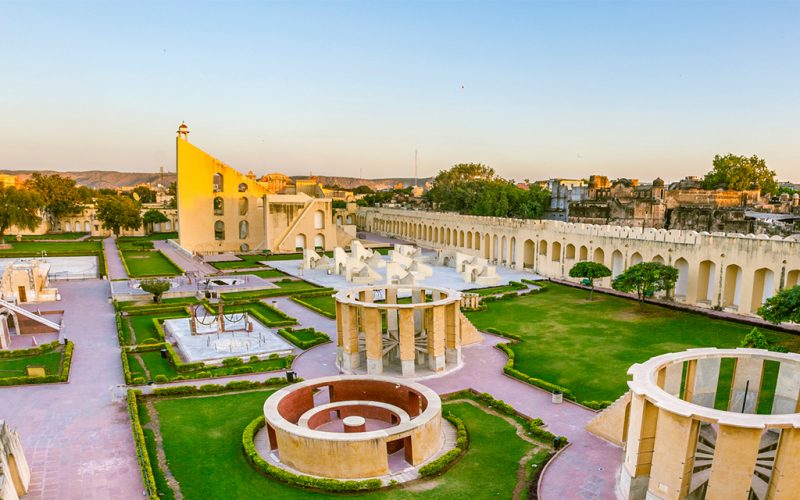
Built in the 18th century by Rajput King Sawai Jai Singh II, the founder of Jaipur, Jantar Mantar is an astronomical observation site consisting of a set of fixed instruments used for studying the astronomical positions with the naked eye. Jantar Mantar is the fine example of historical monuments in India highlighting the remarkable work of masonry that has embodied several instrumentals and architectural innovations.
Legend has it that the Rajput king was always intrigued by the movement of celestial objects and eventually gave the task of building the observatory. His chief astronomer, Jagannatha was a major influence in the design of the Jantar Mantar. Sawai Jai Singh constructed five astronomical observatories in North India, of which the ones in Delhi and Jaipur are well-known.
Keoladeo National Park
[ps2id id=’keoladeo’ target=”/]
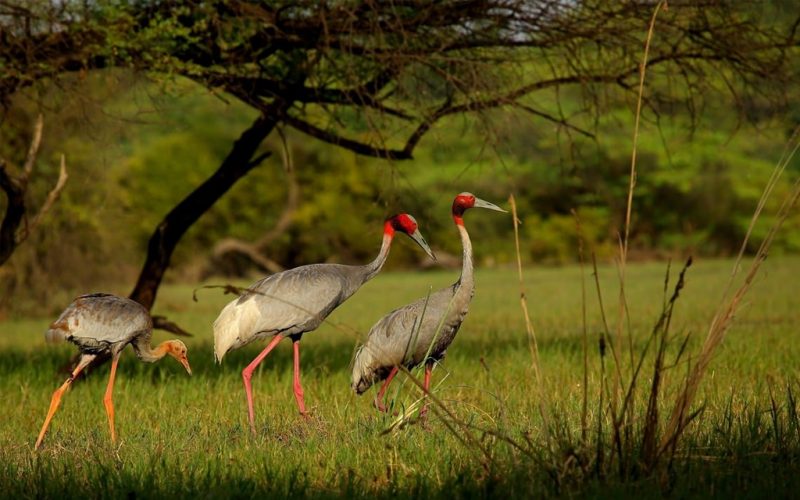
If you think Rajasthan is all about culture, food, traditions and magnificent palaces, you couldn’t be more wrong. Keoladeo National Park in Bharatpur begs to differ. Loaded with diverse fauna and flora, the park gives you an opportunity to enjoy a vacation amidst nature. The park is home to more than 300 species of birds and animals including python, nilgai, deer, Siberian cranes, wild boar etc. Keoladeo National Park was once used as a hunting ground by Maharajas and the Britishers.
Rani-ki-Vav (the Queen’s Stepwell) at Patan, Gujarat
[ps2id id=’rani-ki-vav’ target=”/]
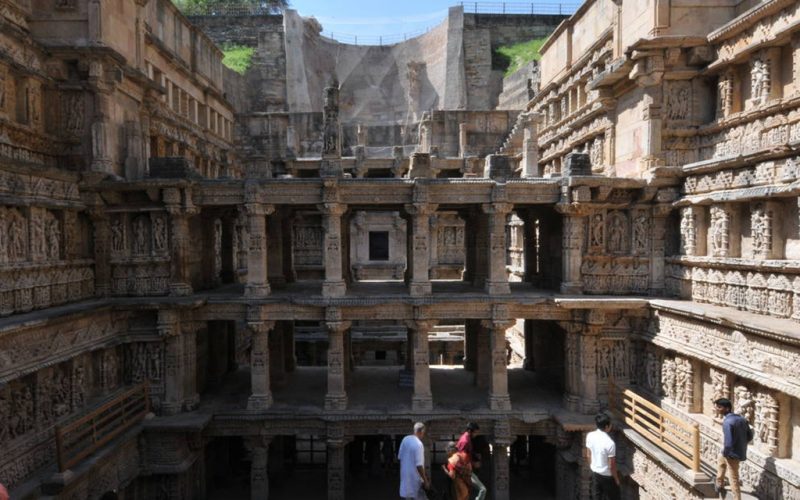
Located in the town of Patan, Queen’s stepwell is a prominent historical monument in the country. The stepwell is situated on the banks of River Saraswati and was initially built as a memorial to a king. The stepwell is designed as an inverted temple highlighting the importance of water. It is divided into 7 levels of stairs with artistic panels and sculptures depicting important chapters of Mahabharata and other religious and mythological texts.
Champaner-Pavagadh Archaeological Park
[ps2id id=’champaner’ target=”/]
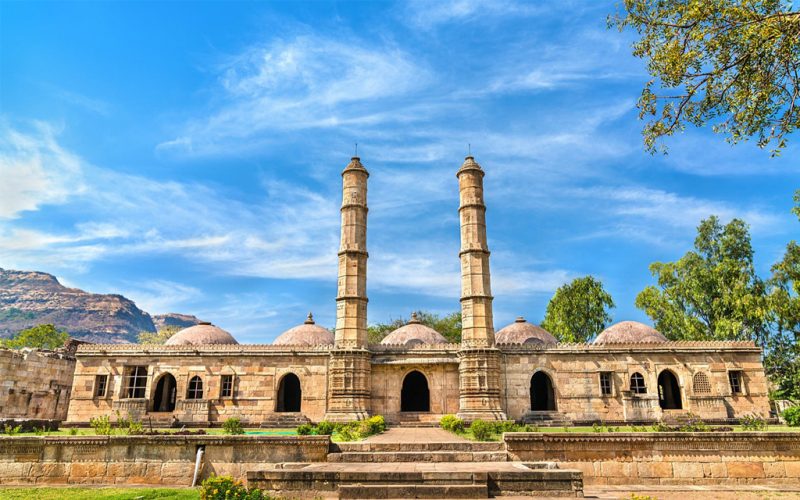
Champaner-Pavagadh archaeological park is a perfect place for history buffs as it offers unexcavated archaeological sites to dig. Being a cauldron of history and culture, the park includes palaces, religious buildings, residential buildings, fortifications dating back from the 8th to 14th centuries. The Pavagarh hill situated nearly 800 meters above sea level is one of the ancient rock formations in the country. Besides this, there are many Jain and Hindu temples from the 10th century that beg to be visited once. Jama Masjid inside the park is the best example of Hindu-Muslim architecture.
Historic City of Ahmadabad
[ps2id id=’historic-city’ target=”/]
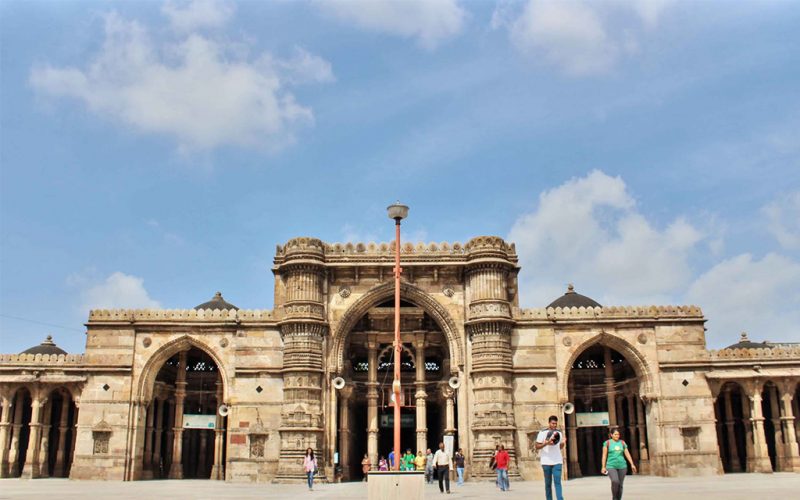
The city of Ahmadabad was founded by Sultan Ahmad Shah in the 15th century. Located on the eastern bank of River Sabarmati, the city is home to many Indo-Islamic monuments, Hindu temples, mosques, tombs and important Jain temples of that period. Despite being a bustling metropolitan city, Ahmadabad is deeply rooted in traditions. It is also known for its association with Mahatma Gandhi who lived in Sabarmati Ashram from 1917 until 1930. The Ashram also served as one of the main centres of the Indian freedom struggle. Ahmadabad owing to its historical, cultural and political significance is a major historical landmark in the country.
Khajuraho Group of Monuments
[ps2id id=’khajuraho’ target=”/]
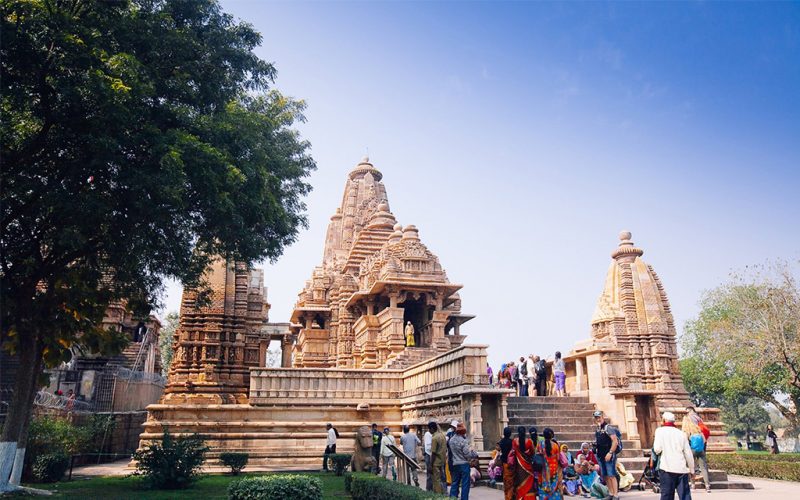
Khajuraho temples in Madhya Pradesh are known for their surreal arts and erotic carvings. The temples were built by Chandela rulers who ruled Central India from 10th to the 13th century. Matangeshvara temple is the only temple in it that is still used for worship. The temples here illustrate the idea of life and depict human passions with such great excellence. Going beyond the erotic sculpture, which only comprises 10% of Khajuraho temples, the rest of the temples shed light on more interesting facts like how these temples are dedicated to two religions- Hinduism and Jainism and how the temples are a fine example of sheer architectural brilliance. No wonder why these temples are included in the list of UNESCO world heritage sites.
Rock Shelters of Bhimbetka
[ps2id id=’rock-shelter’ target=”/]
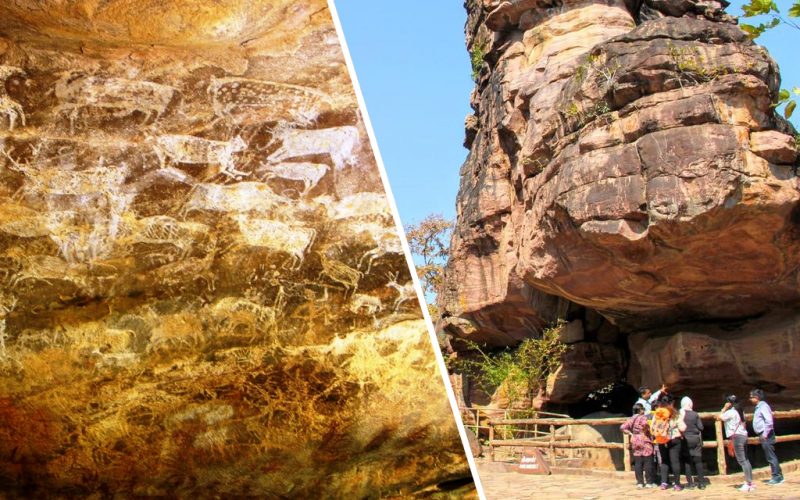
Located in Bhopal, Bhimbetka is a natural art gallery and an archaeological treasure. Local folklore suggests the presence of Bhim, one of the Pandavas at this site and that’s how the caves got its name. Out of 750 shelter sites, 243 are collectively called caves. The rock painting on these magnificent caves belongs to various epochs of time, from upper Palaeolithic, Mesolithic to Protohistoric, early historic and medieval periods.
These paintings can be seen even on the ceilings of the rock shelter at daunting heights and usually depict hunting, dancing, elephant riders, animal fights, decoration of bodies, and different types of animals etc. What is more interesting is that even the paint of these paintings has managed to remain intact for thousands of years. Due to its cultural significance, UNESCO gave it the status of the world heritage site in 1986.
Victorian Gothic and Art Deco Ensembles of Mumbai
[ps2id id=’victorian-gothic’ target=”/]
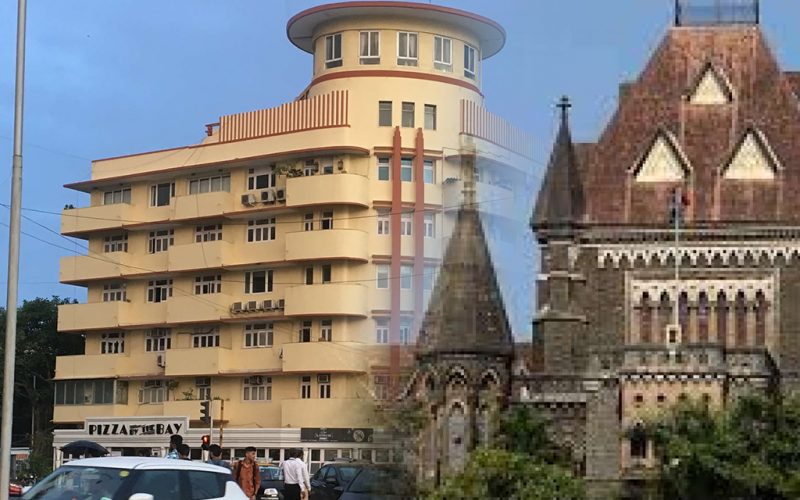
Over the 19th and 20th century, Mumbai witnessed transformation where several buildings were constructed that was a blend of Victorian and Indo architecture. The architectural ensemble represents the most amazing collection of Victorian and art deco building in the world that forms a unique character in urban dwellings. These public buildings are key historical landmarks in the state and include the Old Secretariat, University Library and Convention Hall, the Bombay High Court, the Public Works Department Office, Watson’s Hotel, David Sasoon Library and the Elphinstone College, among others.
Elephanta Caves
[ps2id id=’elephanta-caves’ target=”/]
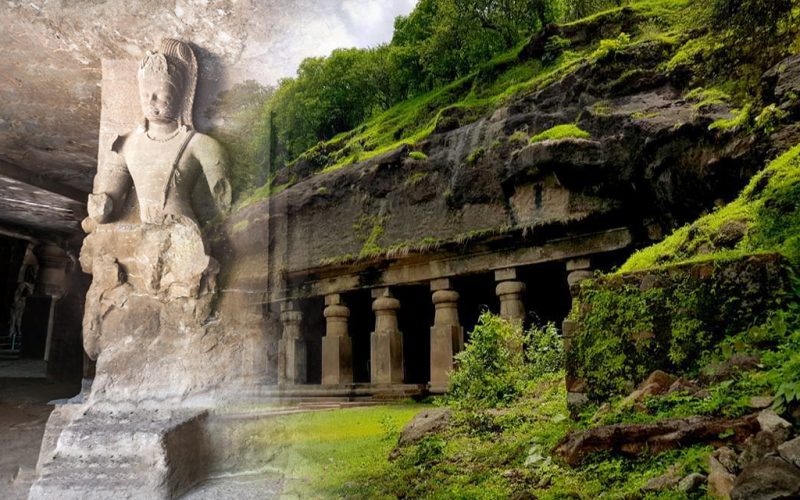
Originally known as Gharapuri, the island was renamed by Portuguese invaders to Elephanta caves after a giant stone sculpture of an elephant was removed from the island. The island is regarded for its colossal image of Mahesamurti with three heads each representing a different form i.e Aghori, Ardhanarishvara and Mahayogi. It was originally a Buddhist site which later got dominated by the Shaivite faith.
There are seven cave excavations in the Elephanta group where carvings are made out of solid basalt rock. The caves boast sculptures with stark lights and dark effects. One can also see the sculpture of Shiva’s cosmic dance of primordial creation and destruction and his marriage to Parvati. With majestic figurines and carvings dedicated to Hindu lord, the caves are one of the most prized possessions of India.
Ajanta Caves
[ps2id id=’ajanta-caves’ target=”/]
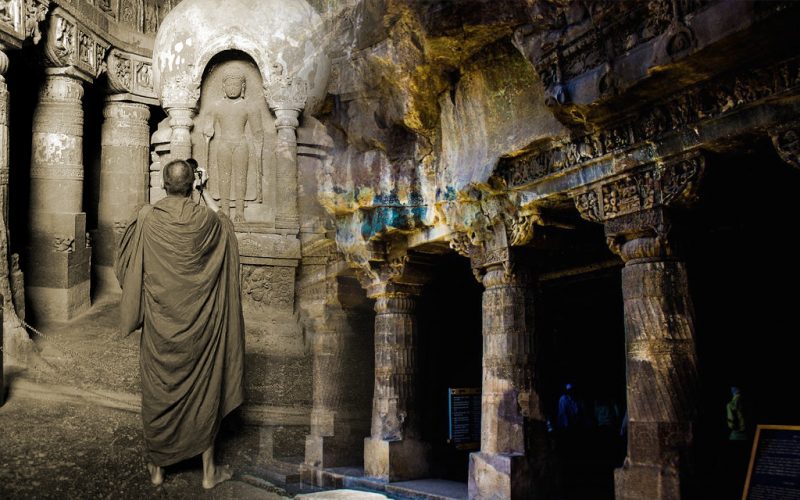
Once a sanctuary of Buddhist monks, Ajanta caves are a series of rock-cut caves located in Sahyadri ranges in Maharashtra. These caves are known for their intricate carvings involving paintings and sculptures inspired by Buddhism. The caves were excavated in different periods (circa. 2nd century B.C. to 6th century A.D.) according to the necessity. There are a total of 29 caves of which 25 were used as residential caves and 4 were used as prayer halls. Ajanta Caves are important tourist attractions of Maharashtra that have successfully withstood the ravages of time.
Ellora Caves
[ps2id id=’ellora-caves’ target=”/]
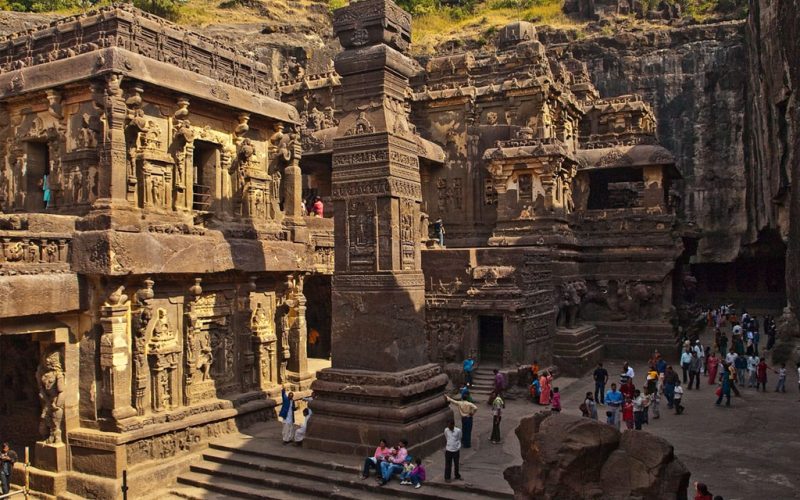
Located nearly 100kms from Ajanta caves, lies another distinguished series of caves ‘Ellora’ that were developed during the period between 5th and the 11th centuries A.D. Ellora caves reflects a natural diversity in terms of themes and architectural styles. It also has the most remarkable cave temple ‘Kailasha’ named after mountain in the Kailash range of the Himalayas where the Hindu god Shiva resides. The sculptures at Ellora caves are inspired by Buddhism, Hinduism and Jainism.
The caves are also regarded for their intricate artworks and creative use of colour and human emotions. A high degree of craftsmanship incorporating the rules lay down by ancient Indian treaties on painting & aesthetics are evident. The artistic insights and use of contouring techniques make the figures emerge from the surface of the wall. Even birds and animals are shown with emotion.
Chhatrapati Shivaji Terminus
[ps2id id=’chhatrapati-shivaji’ target=”/]
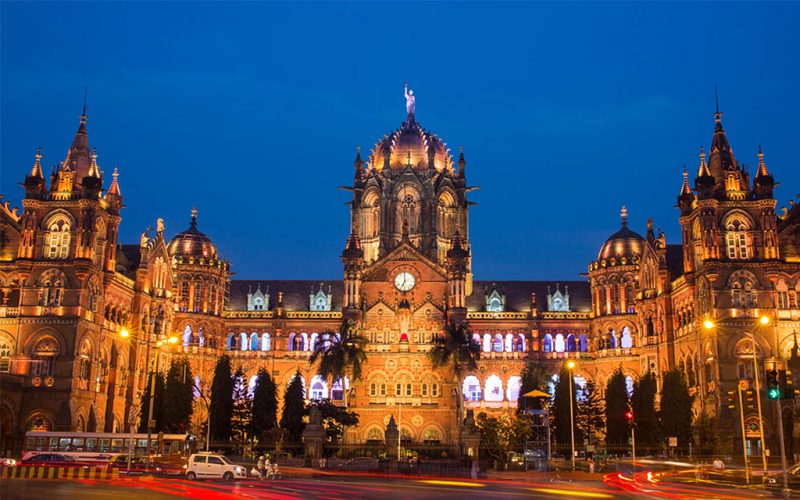
Formerly known as Victoria Terminus, Chhatrapati Shivaji Terminus is Mumbai’s iconic railway station that is also a phenomenal example of Victorian gothic architecture in India. The terminus was designed by the British architect F.W. Stevens in 10 years and was completed in 1888. It is one of the grand reminders of the British Raj in India and remains an iconic landmark in the country. Its astonishing pointed arches, stone dome and turrets resemble the traditional palaces in India.
Churches and Convents of Goa
[ps2id id=’churches’ target=”/]
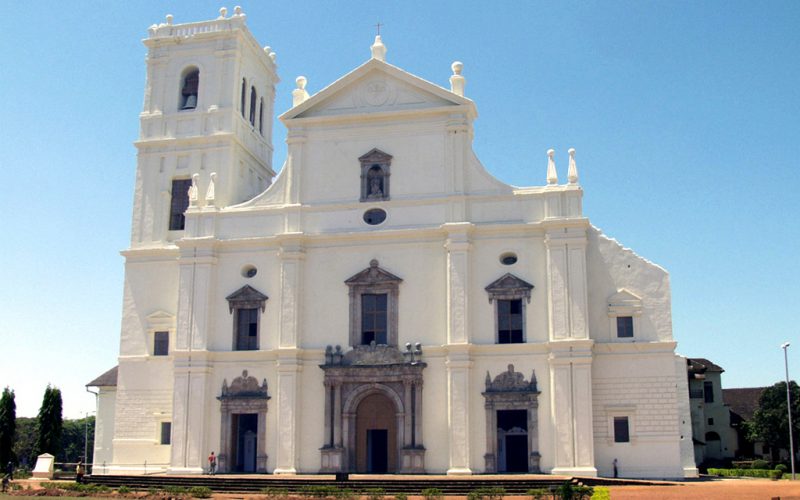
Goa is home to several convents and churches, all thanks to Portuguese who came to find the land know n as ‘India’ and made Goa their home. Churches and convents of Goa represent Catholic religious structures that have been heavily influenced by Portuguese style of art and architecture. This group of churches include- St. Catherine’s Chapel, Basilica of Bom Jesus, Church of Saint Cajetan including the seminary, Church and Convent of Francis of Assisi Sé Cathedral, Church of Our Lady of the Rosary and St. Augustine Tower among others. The Basilica of Bom Jesus contains the tomb of St Francis-Xavier, the patron saint of Goa. These churches and convents are popular tourist attractions in Goa.
Nalanda Mahavihara at Nalanda, Bihar
[ps2id id=’bihar’ target=”/]
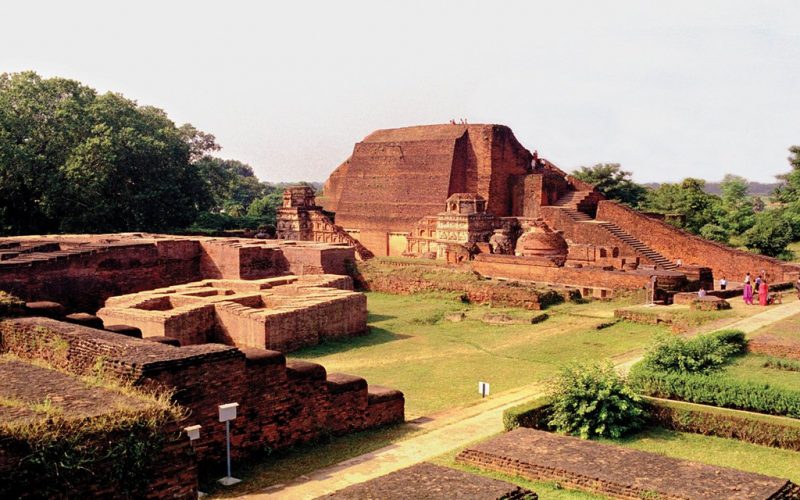
Nalanda Mahavihara site is an important archaeological site that holds the remains of a monastic and scholastic institution dating from the 3rd century BCE to 13th century CE. Chinese pilgrim Hiuen Tsang who came during the reign of King Harsha gave account of this flourishing establishment. It is said that the Ancient Nalanda University continued to be the centre of intellectual activity till the 12th century. The Mahavihara consists of Stupas, shrines and important artworks in stone and metal. Nalanda, due to its immense cultural significance was given the status of UNESCO world heritage sites in 2016.
Buddhist Monuments at Sanchi
[ps2id id=’budddhist’ target=”/]
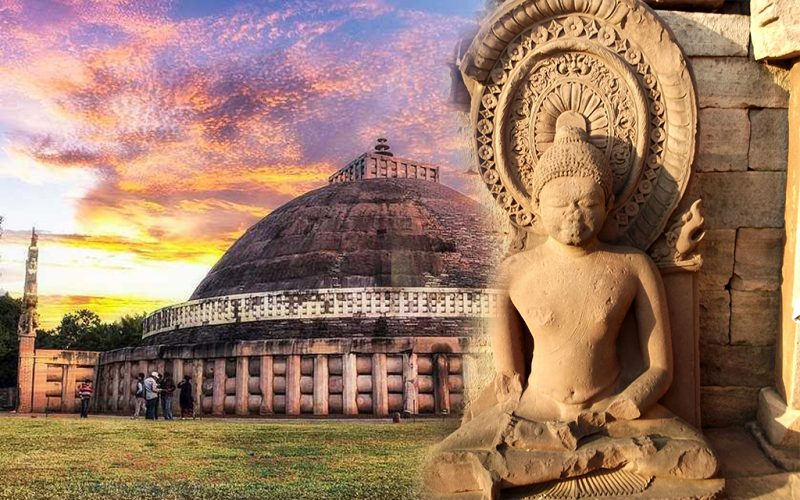
The Buddhist architecture illustrates different aspects of Buddha’s life and tales and stories associated with him. Ashoka was the greatest patron of Buddhist architecture. Located in Madhya Pradesh, Sanchi is a significant town boasting Buddhist Stupas, monolithic pillars, monasteries, temples and palaces dating back to 2nd and 1st century BC.
The Sanchi Stupa is a hemispherical dome, truncated near the top and surrounded at the base by lofty terrace serves as a gate for procession. It is also a UNESCO world heritage site since 1989. The influence of the Sanchi Stupa on our national psyche goes beyond the lion capital of Sarnath. The Stupa inspired the design of several modern buildings including modern-day Rashtrapati Bhavan.
Mahabodhi Temple Complex at Bodh Gaya
[ps2id id=’mahabodhi’ target=”/]
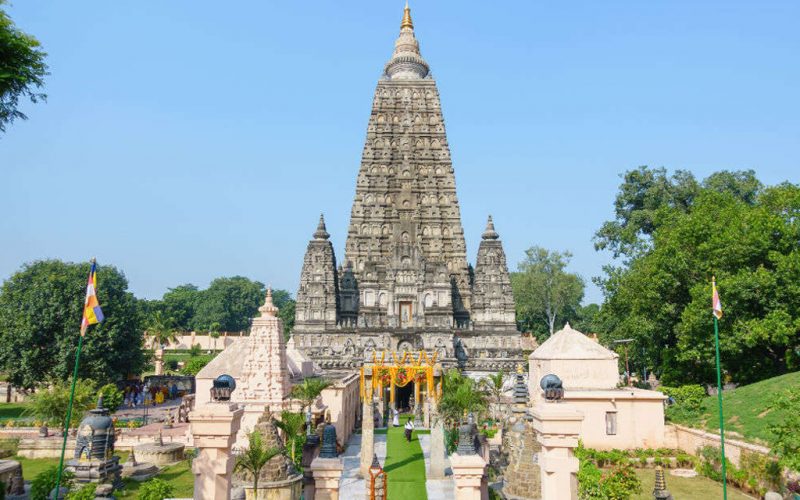
Known to be one of the popular historical places in India, Mahabodhi temple complex is the place where Buddha is said to have achieved enlightenment. The original structure of the complex was built by Ashoka but was reconstructed entirely in brick during Gupta period. The temple complex provides exceptional records of events associated with Buddha and his life. Adjacent to the temple stands a descendent of the Bodhi tree (under which Buddha attained enlightenment). Owing to Mahabodhi temple complex’s cultural and historical association with Buddha, UNESCO declared it as a world heritage site back in 2002.
Great Living Chola Temples
[ps2id id=’chola-temples’ target=”/]
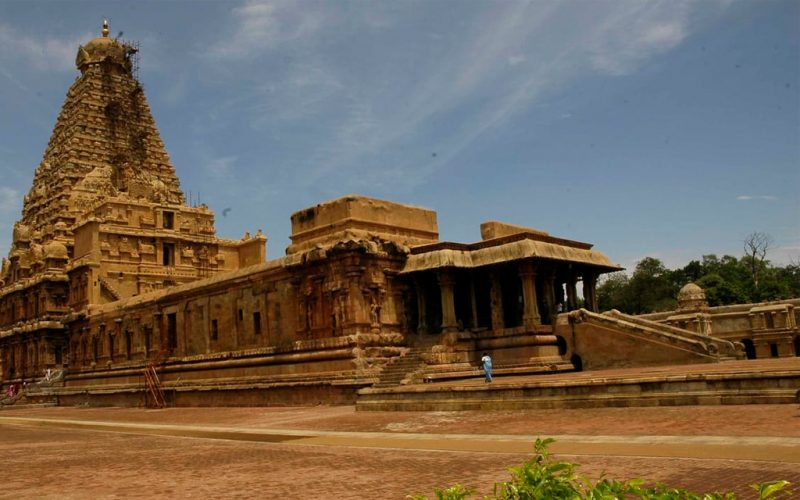
Built by the kings of Chola Empire in South India, The Great Living Chola Temples include- Brihadisvara Temple at Thanjavur, the Brihadisvara Temple at Gangaikondacholisvaram and the Airavatesvara Temple at Darasuram dating back from 11th and 12th century. These temples are considered to be the excellent marvels of Dravidian architecture and important centers of worship. From intricate carvings and iconography to depiction of rich Dravidian culture through finely-crafted sculptures, these temples hold significant cultural values to Shiva followers particularly.
Group of Monuments at Mahabalipuram
[ps2id id=’mahabalipuram’ target=”/]
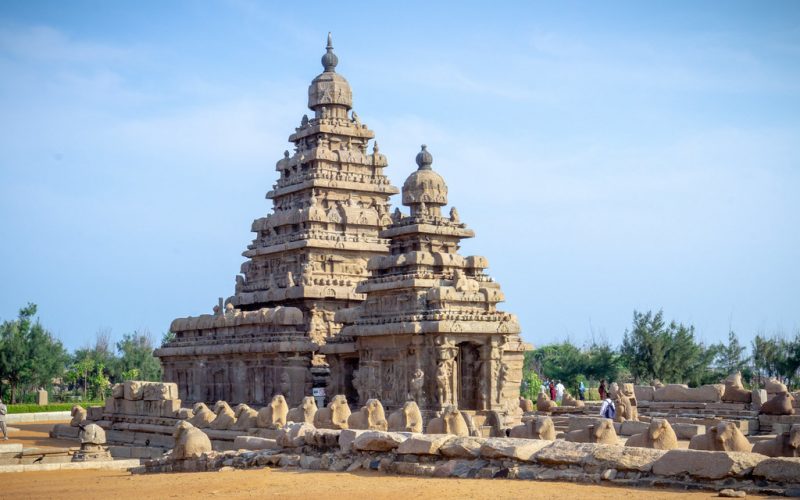
Pallavas were the great patron of art and architecture who are credited for the construction of several fascinating marvels including the monuments at Mahabalipuram. These monuments from the 7th century AD depict their fascination towards rock-cut temples. These temples with Rathas, Mandapas and open air-reliefs bear their own distinctive characteristics and illustrate the influence of Buddhist rock-cut caves.
Group of Monuments at Hampi
[ps2id id=’hampi’ target=”/]
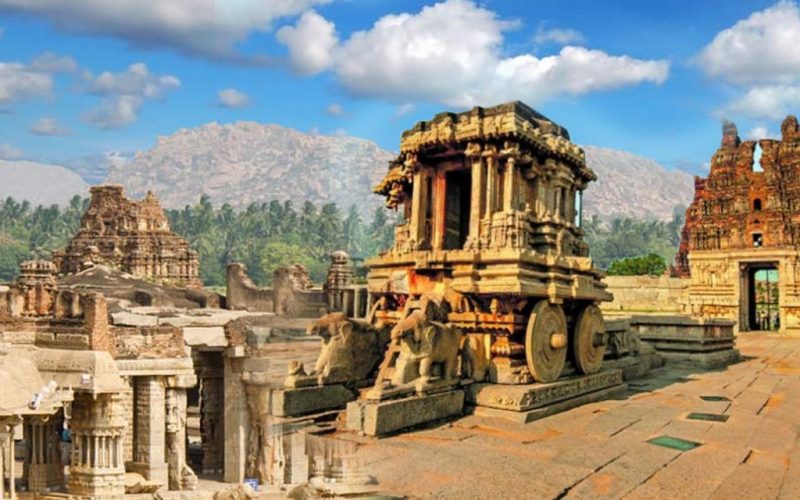
Hampi is the last capital of India’s last mightiest Hindu empire ‘Vijayanagar’. Located in eastern Karnataka, the group of monuments at Hampi are major pilgrimage centers of the Hindu religion. It houses Virupaksha temple, oldest temple in Hampi dedicated to Lord Shiva, an active Adi-Shankara linked monastery, and other Dravidian style temples and palaces dating back from the 14th and 16th centuries. The architecture of these monuments is mostly Dravidian but a few traces of Indo-Islamic architecture can be seen in them. These historical monuments hold a great importance for the worshippers of Shiva.
Group of Monuments at Pattadakal
[ps2id id=’pattadakal’ target=”/]
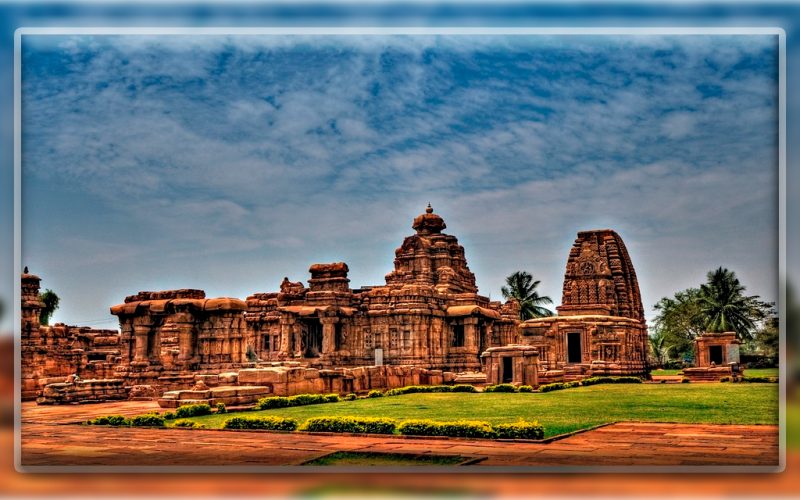
The historical monuments dating back to the 7th and the 8th centuries are the best architectural work carried out under the Chalukya dynasty. The place consists of 10 temples each having its distinct architectural characteristics that are a perfect blend of northern and southern architectural forms. 9 of these temples are Hindu temples and one is Jain sanctuary. Among these, Virupaksha temple and Mallikarjuna temple are highly regarded as it was built by King Vikramaditya II’s two wives to commemorate her husband’s victory over the Pallavas.
Sun Temple, Konârak
[ps2id id=’sun-temple’ target=”/]

The sun temple of Konarak is a monumental representation of Surya, sun god with his chariot lead by a team of horses. The 13th-century temple in Odisha is a world heritage site owing to its association with Brahmanism and the tantric-belief system. It was built by King Narasimhadeva I who was a great ruler of the Ganga dynasty. Not only known for its grand architecture, but the temple is also famous for its profusion of sculpture work. The seven horses symbolize the seven days of the week. There are two rows of 12 wheels representing 12 months/24 hours. The temple is a perfect example of Kalinga architecture. Due to its ‘dark color’, the temple is also known as ‘Black Pagoda’.
Great Himalayan National Park Conservation Area
[ps2id id=’great-himalayan’ target=”/]
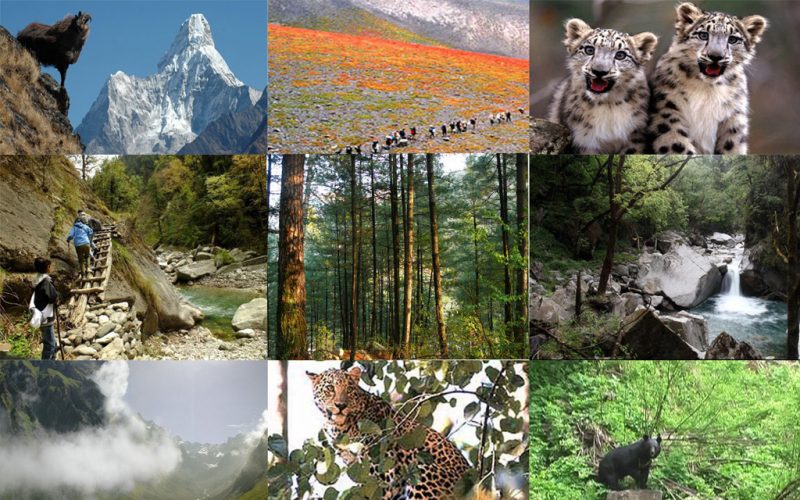
Located in Himachal Pradesh, this national park boasts of high alpine peaks, meadows and riverine forests. The park is a part of the Himalayan biodiversity hotspot for housing several endangered species of birds and animals. Spread over an area of 1,171 Km square, the national park is habitat to more than 300 fauna species including blue sheep, Himalayan brown bear, snow leopard, Himalayan Tahr and musk deer among others. Due to its outstanding efforts in biodiversity conservation, UNESCO included the park in its list of world heritage sites in 2014.
Kaziranga National Park
[ps2id id=’kaziranga’ target=”/]
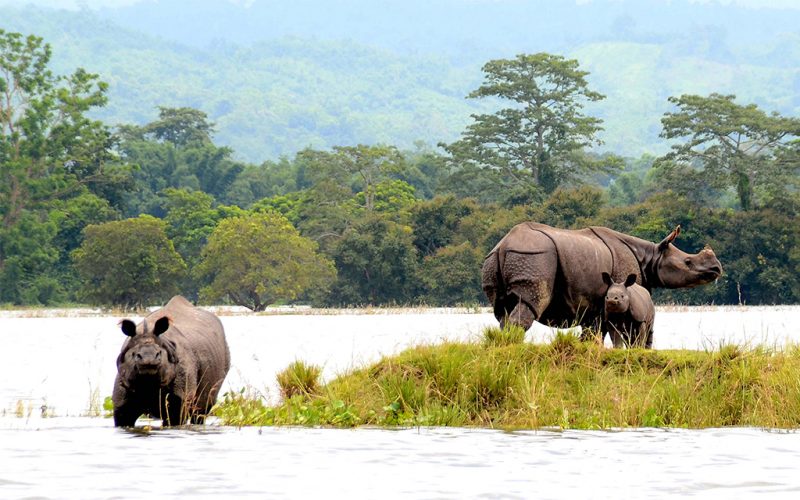
Spread over 430 Km square area, Kaziranga National Park in Assam is home to the one-horned rhinos and diverse fauna and flora. The park is sprinkled with swampy lagoons, elephant-grass meadows and dense forest housing species like white-fronted goose, ferruginous duck, Baer’s pochard duck, Asiatic water buffalo and Royal Bengal tiger among others. The national park also has a high density of tigers due to which it was declared a tiger reserve in 2007. The park is a major tourist attraction in the state.
Manas Wildlife Sanctuary
[ps2id id=’manas-wildlife’ target=”/]
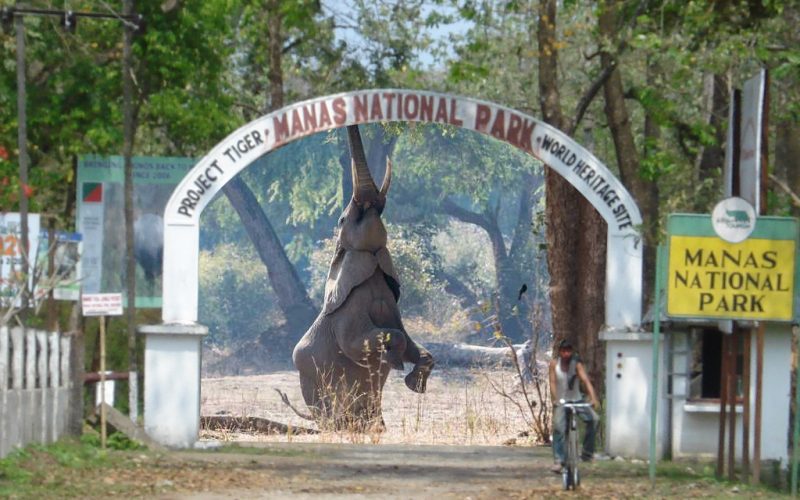
Located at the foothills of Himalayas in Assam, Manas wildlife sanctuary is famous for its unique biodiversity and tropical landscape. It is a habitat for a variety of wildlife including rare and endangered species like Roofed Turtle, Hispid Hare, Golden Langur and Pygmy Hog. The sanctuary is famous for its population of the Wild water buffalo. The area was once used as a hunting reserve by the royal family of Cooch Behar and Raja of Gauripur.
Sundarban National Park
[ps2id id=’sundarban’ target=”/]

Covering 10,000 km square of area, Sundarban forms the largest delta in the world spread over India and Bangladesh. Sundarban National Park is a part of the Indian Territory that is world-famous for Royal Bengal Tigers. Named after Sundari trees (mangrove plants) that are found in abundance in the area, the national park is also home to a wide variety of birds, reptiles, amphibians including salt-water crocodile, Gangetic dolphins, jungle-fowl, wild boars, king crabs etc. In 1987, Sundarban National Park was crowned as one of the world heritage sites by UNESCO.
Khangchendzonga National Park
[ps2id id=’Khangchendzonga’ target=”/]
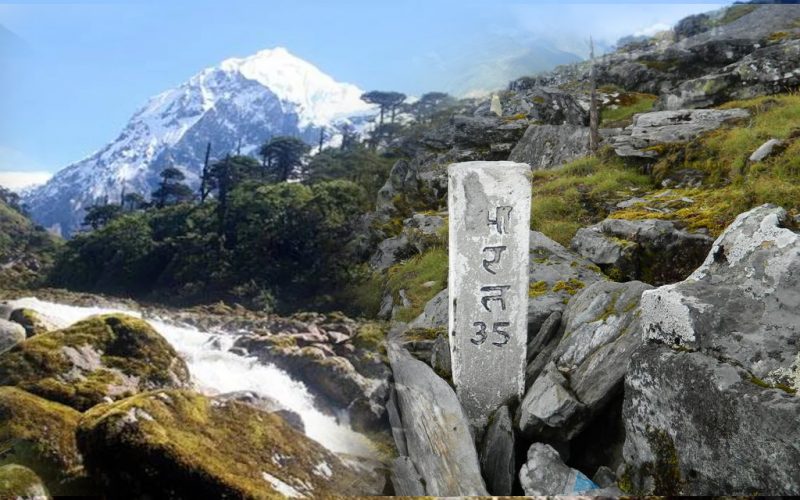
The Khangchendzonga Biosphere Reserve is the one of the highest biodiversity hotspots in the world. The national park is loaded with biodiversity and landscapes like mountains, peaks, lakes, caves, rocks, stupas (shrines) and hot springs. The national park includes 4,500 species of flowering plants and protected species like the Red panda, snow leopard, himalayan black beer and herbivores species of musk deer, great tibetan sheep, blue sheep, boral and barking deer. The sacred landscape of Khangchendzonga and its cultural and religious ties to the land of Sikkim has earned it the moniker of being a world heritage site.
Mountain Railways of India
[ps2id id=’mountain-railways’ target=”/]
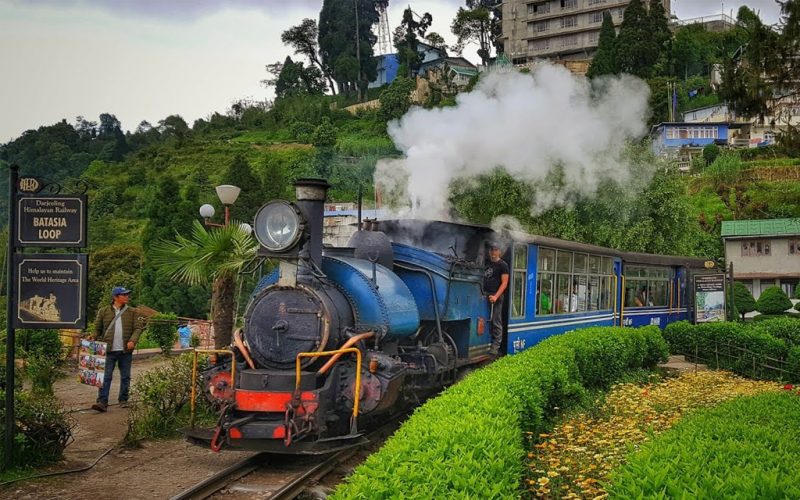
A major tourist attraction in India, mountain railways encompasses 6-7 small railway lines that were built during the British rule and are still functioning properly. These railway lines offer exceptional travel adventures in the rugged yet panoramic terrain of the mountains in India. Four of the mountain railways i.e The Darjeeling Himalayan Railways, The Nilgiri Mountain Railway, Kalka-Shimla Railway and Matheran Railway have been declared as the world heritage sites by the UNESCO.
Western Ghats
[ps2id id=’western-ghats’ target=”/]
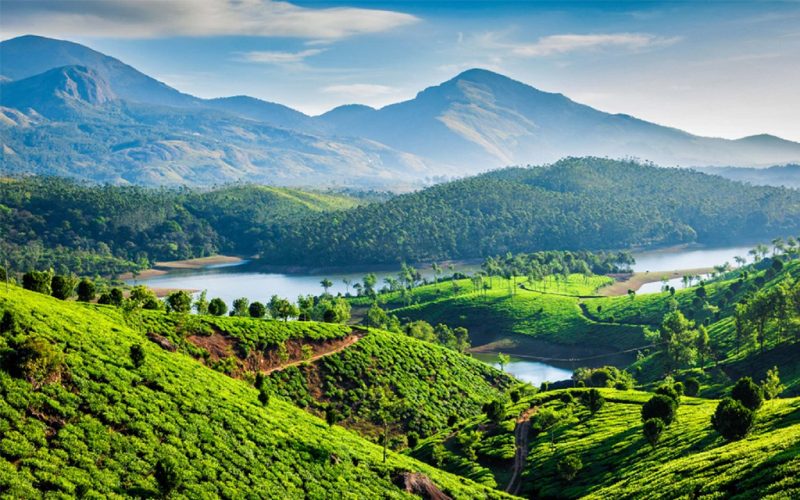
The Western Ghats is an extensive region spanning over six states in India. It is the home of many endangered wildlife and a key biodiversity hotspot in the country. The range of the mountain starts around the border of Gujarat and Maharashtra to the south of river Tapti where it finally runs into a little north of Kanyakumari.
The Western Ghats play a pivotal role in maintaining ecological balance as they are the habitat of more than 500 species of fishes, amphibians, reptiles and 1500 species of flowering plants. The Ghats also influence the monsoon weather patterns across the country and act as a barrier to the rain-laden southwest monsoon winds in late summer.



